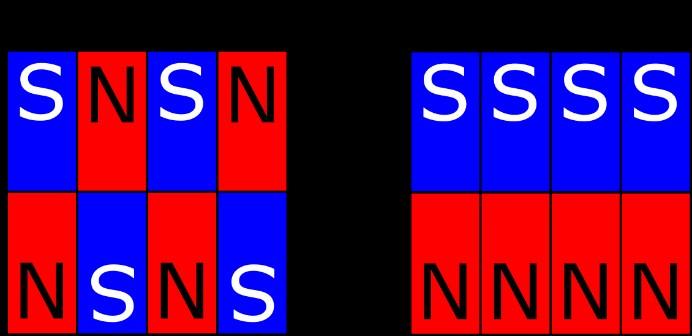Physicists at Mainz University and cooperation partners observe reading and writing of digital information with antiferromagnetic materials

Credit: Ill./©: Lorenzo Baldrati, JGU
Future computer technology based on insulating antiferromagnets is progressing. Electrically insulating antiferromagnets such as iron oxide and nickel oxide consist of microscopic magnets with opposite orientations. Researchers see them as promising materials replacing current silicon components in computers. Physicists at Johannes Gutenberg University Mainz (JGU) in collaboration with Tohoku University in Sendai in Japan, the synchrotron sources BESSY-II at Helmholtz-Zentrum Berlin (HZB), and Diamond Light Source, the UK’s national synchrotron, have demonstrated how information can be written and read electrically in insulating antiferromagnetic materials.
By correlating the change in the magnetic structure, observed with synchrotron based imaging, to the electrical measurements performed at JGU, it was possible to identify the writing mechanisms. This discovery opens the way toward applications ranging from ultra-fast logic to credit cards that cannot be erased by external magnetic fields – thanks to the superior properties of antiferromagnets over ferromagnets. The research has been published in Physical Review Letters.
Antiferromagnetic materials, interesting and not useless
Antiferromagnetic materials potentially allow for memory elements much faster and with higher storage capacity than what it is available now with conventional electronics. However, these materials are very difficult to control and detect, which makes the writing and reading operations in devices challenging. In his 1970 Nobel Prize speech, Louis Néel described antiferromagnetic materials as interesting but useless. It was believed that one can manipulate these materials only by very strong magnetic fields, which cannot be generated easily and require, for example, the use of superconducting magnets. The situation has changed drastically in the last few years, with reports showing that it is possible to control antiferromagnetic materials including even insulators efficiently by electrical currents.
International collaboration studying the advantages of spintronics with antiferromagnets over conventional electronics
“We know that we are going to reach soon the limits of conventional electronics based on silicon, due to the continuous technological improvement. That is the main reason driving research in spintronics, which aims to exploit not only the charge of the electrons but also the spin degree of freedom, doubling the information carried and computed”, said Dr. Lorenzo Baldrati, Marie Sk?odowska-Curie Fellow at Mainz University and first author of the paper.
“Our research shows that antiferromagnetic insulator materials can be written efficiently and read electrically, which is a key step in view of applications.” Lorenzo Baldrati works in the laboratory headed by Professor Mathias Kläui. “I am very happy to see our fruitful collaboration with our colleagues in Japan and groups in Mainz leading to another joint publication. With the support of the German Academic Exchange Service (DAAD), the Graduate School of Excellence Materials Science in Mainz (MAINZ) and the German Research Foundation (DFG), we were able to initiate a lively exchange between Mainz and Sendai and with various other theory groups.”
Professor Olena Gomonay of the JGU-based group of Professor Jairo Sinova developed the theory. “I enjoyed the joint work the experimental colleagues in Mainz. It was exciting to see how theory and experiment help each other to discover new physical mechanisms and phenomena”, said Golomay. “Though our work focused on only one particular system, it can be considered as a proof-of-principle for the family of antiferromagnetic insulators. We hope that the deep understanding of antiferromagnetic dynamics, which we achieved during this project, will push forward the exciting field of antiferromagnetic spintronics and will be a starting point for new joint projects from our groups.”
###
Media Contact
Dr. Lorenzo Baldrati
[email protected]
49-613-139-27231
Original Source
http://www.
Related Journal Article
http://dx.




